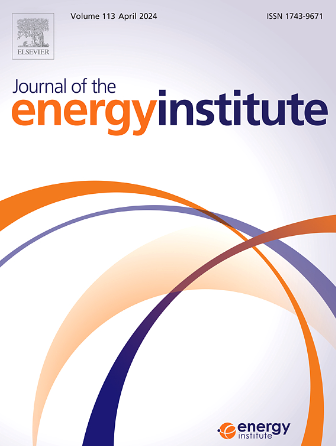Mechanistic exploration of tar-rich coal pyrolysis through ReaxFF MD simulation coupled with experimental validation
IF 5.6
2区 工程技术
Q2 ENERGY & FUELS
引用次数: 0
Abstract
Pyrolysis is essential for the clean and efficient utilization of coal resources, but its inherent complexity and unpredictability pose significant challenges in elucidating the involved reaction mechanisms. Herein, we revealed the pyrolysis behavior of tar-rich coal through ReaxFF MD simulations combined with experimental validation. The simulation reveals that coal pyrolysis is a gradual process of removing volatile components in three main stages: activation, pyrolysis (primary and secondary), and condensation. The carboxyl group cleavage triggers coal pyrolysis, followed by successive decomposition processes including ether bond and side chain breakages, opening of hetero- and aliphatic rings, and cleavage of bridge bonds between aromatic rings, resulting in producing tar and gas products. Crucially, unsaturated fragments in the tar tend to condense into semi-coke or char, reducing the tar yield, while H• radicals can stabilize the tar, inhibit condensation, and improve its quality. The fixed-bed rapid pyrolysis experiments confirm the simulation results, validating their accuracy despite minor deviations due to neglected heat and mass transfer effects in the simulation. These findings provide atomic-scale insights into coal pyrolysis, offering valuable theoretical guidance for optimizing industrial pyrolysis processes and improving product control.
ReaxFF MD模拟结合实验验证探讨富焦油煤热解机理
热解是煤炭资源清洁高效利用的重要手段,但其固有的复杂性和不可预测性给热解反应机理的研究带来了巨大挑战。本文通过ReaxFF MD模拟结合实验验证,揭示了富焦油煤的热解行为。模拟结果表明,煤的热解是一个挥发性组分去除的渐进过程,主要分为活化、热解(一次热解和二次热解)和冷凝三个阶段。羧基解理触发煤热解,随后依次发生醚键和侧链断裂、杂环和脂肪环打开、芳香环间桥键断裂等分解过程,产生焦油和气体产物。至关重要的是,焦油中的不饱和碎片容易凝结成半焦或焦,从而降低焦油收率,而H•自由基可以稳定焦油,抑制缩聚,提高焦油质量。固定床快速热解实验验证了模拟结果的准确性,尽管模拟过程中忽略了传热传质效应而产生了较小的偏差。这些发现为煤热解提供了原子尺度的认识,为优化工业热解过程和改进产品控制提供了有价值的理论指导。
本文章由计算机程序翻译,如有差异,请以英文原文为准。
求助全文
约1分钟内获得全文
求助全文
来源期刊

Journal of The Energy Institute
工程技术-能源与燃料
CiteScore
10.60
自引率
5.30%
发文量
166
审稿时长
16 days
期刊介绍:
The Journal of the Energy Institute provides peer reviewed coverage of original high quality research on energy, engineering and technology.The coverage is broad and the main areas of interest include:
Combustion engineering and associated technologies; process heating; power generation; engines and propulsion; emissions and environmental pollution control; clean coal technologies; carbon abatement technologies
Emissions and environmental pollution control; safety and hazards;
Clean coal technologies; carbon abatement technologies, including carbon capture and storage, CCS;
Petroleum engineering and fuel quality, including storage and transport
Alternative energy sources; biomass utilisation and biomass conversion technologies; energy from waste, incineration and recycling
Energy conversion, energy recovery and energy efficiency; space heating, fuel cells, heat pumps and cooling systems
Energy storage
The journal''s coverage reflects changes in energy technology that result from the transition to more efficient energy production and end use together with reduced carbon emission.
 求助内容:
求助内容: 应助结果提醒方式:
应助结果提醒方式:


